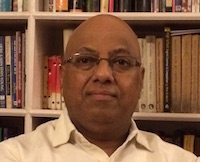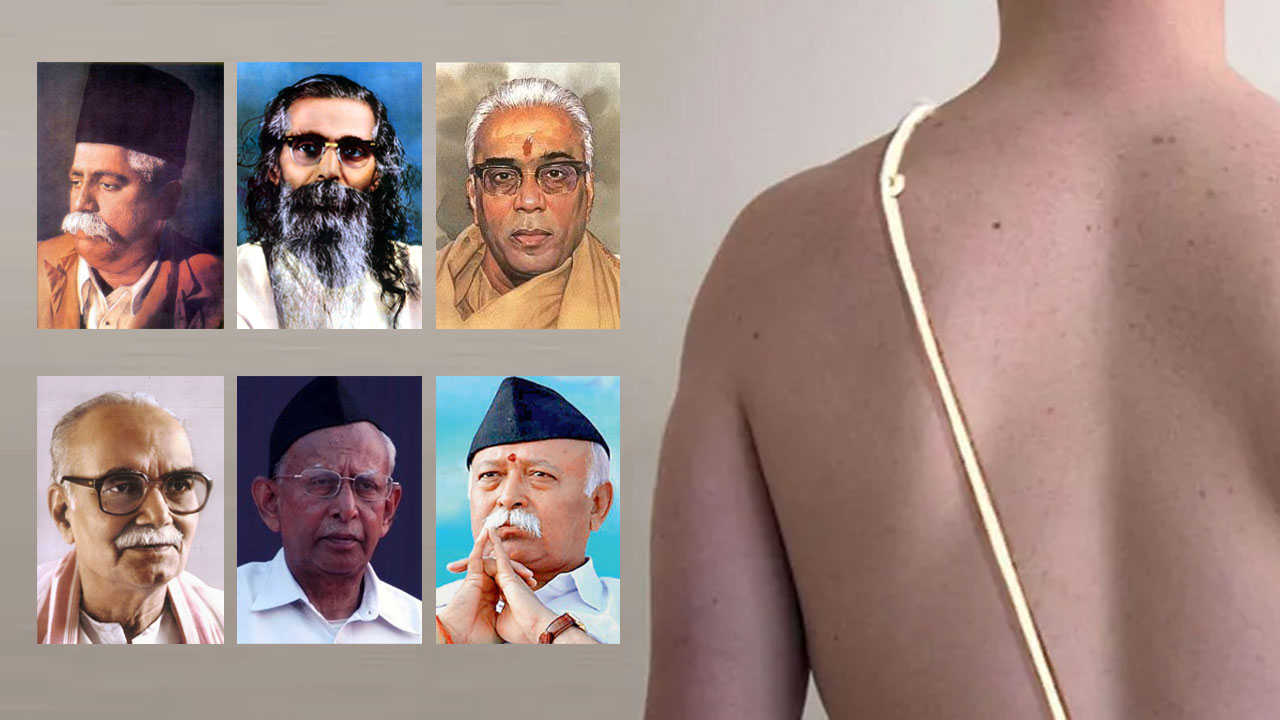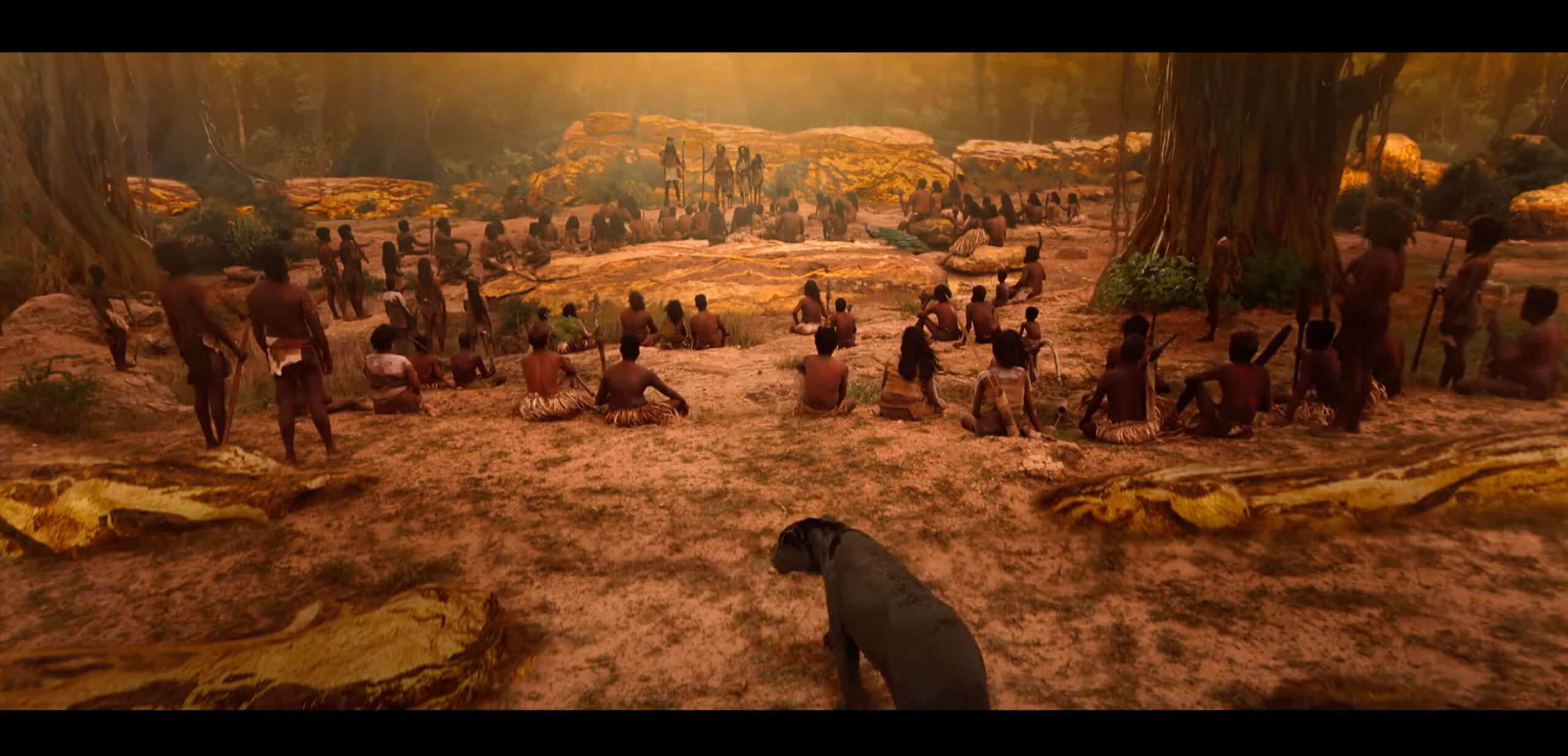To even a casual observer of Islamic and World History, the period between the Mongol conquests of the Muslim lands and the Christian reconquista of the Iberian peninsula would appear striking in many ways. The process that began with the explosion of Mongol power in the early 13th century and ended with the expulsion of the Moors from Spain in 1492 marked the first existential crisis in the material and philosophical world of Islam. The year 1492 was also the one in which Columbus discovered the sea route to the new world. In 1498, Vasco Da Gama, the Portuguese admiral, charted a sea route to India which would ultimately bypass Egypt, the Red Sea and Persian Gulf region through which, for centuries, the trade from India to Europe had been conducted, bringing wealth and prosperity to the heartland of the Islamic civilization. Thus the first phase of mercantilist globalization shifted the gravity of trade and commerce to the larger Atlantic and Indian Ocean world and caused a grave crisis in the Islamic world of the time. Contemporary Muslim scholars were quick to notice the crisis produced first by the Mongol invasions and later by the rise of the West and its multifarious implications. How the Muslims would respond to these changes became an important question in Islamic history and philosophy in this time of crisis. While the debate between those who wanted the gates of ijtihad (interpretation of Islamic canon) to remain open and those who wished to close them became a regular feature of Islamic reform in the wake of the suffering visited upon the Arab and Persian worlds by Changez Khan, Islamic scholars reflected on their times in creative, philosophical ways. In the 14th century, Abd al Rahman ibn Khaldun (1332-1406), the great historian-philosopher, observed the crisis of Islam in words that spoke of revolutionary changes in Islamic history.
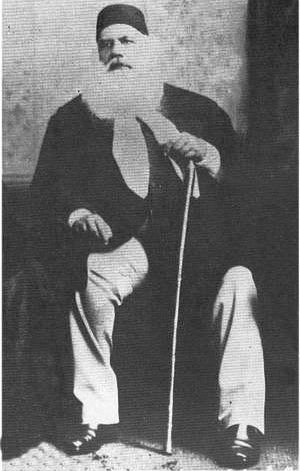
Khaldun’s Al-Maqaddimah: An Introduction to History provided a scientific understanding of the rise and fall of civilizations centuries before Gibbon, as Voltaire’s disciple, wrote his magnum on the decline and fall of the Roman Empire. The crisis observed by the perceptive ibn Khaldun passed with absorption of the Mongol element within the Islamic fold and ultimately due to the rise of Turkish Ottoman power, which restored the confidence of Muslims in their own military and political capabilities. At its height, the Ottoman Empire comprised the biggest power bloc in the world and its influence was felt in a large geographical area stretching from Egypt in the West to Bengal in the East. In India, it was rum, beginning with Babur’s military observations, which influenced the gunpowder technology of the Mughals well into the 18th century. As long as the Ottoman Empire flourished, urban Muslims in the old world could, and indeed did, relate to it and its Khalifa in numerous ways. The association of metropolitan Islam, to use a term in latest academic fashion, with the Ottoman Empire lasted till the First World War, after which the victorious Entente Powers dismantled this creaking empire in an act of humiliation impossible for the Muslims to forget easily.
The rise of the West and terminal decline of the Ottoman Empire caused a prolonged multidimensional crisis in the world of Islam, the repercussions of which can be felt even in our times. As far as India is concerned, the decline of Ottoman Turkey in the 18th and 19th centuries coincided with the rapid decline and disintegration of the Mughal Empire. This process created the conditions and search for a new civilizational synthesis for the Muslims, who soon became a victim of Orientalism – a victimhood from which they still suffer. The elites sustained by the Ottoman and Mughal empires entered a period of existential crisis and decline simultaneously. In India, the decades between the Battle of Buxar (1764) and the extension of British power to Delhi following the conclusion of the Second Anglo-Maratha War (1805) created the immediate political context within which traditional intellectuals like Syed Ahmad found themselves grappling with ontological and historical questions haunting the literate Muslims of his time. The decline of Turkey, Persia and Mughal India shattered the social security of the noble elites produced by these empires and upon which the administration and hegemony of these powers rested. New powers arose in India and the star of the Company Bahadur was in the ascendant. In such circumstances, those who collaborated with the Company or the rebel polities of the 18th century stood to gain. The rise of British power in India produced new elites, displaced opponents and created religious insecurities especially after the evangelical missionaries flocked to India following the passage of the Charter Act of 1813. The spread of evangelical influence throughout India posed a direct and serious threat to the hegemonic position held in Indian society by its traditional intellectuals.
Syed Ahmad was born in this early colonial milieu in 1817 and the socially sheltered class to which he belonged owed its societal pre-eminence to the Mughal emperor’s patronage. Even in 1817, 40 years before the cataclysm of 1857, the future of this class seemed fraught with uncertainty. Power, education and trade had steadily shifted to the Company presidencies since the mid-18th century; in Calcutta, Bombay and Madras, the Muslims were not numerous, and Hindu upper castes had taken a clear lead in social and educational life. In these presidencies, sections of the lower castes were steadily coming under the influence of Christian missionary education. Long before Aligarh Muslim University was established, the Muslims of Calcutta had realized the problem of a lack of education facing their community and a Muslim delegation had approached an obliging Warren Hastings with the demand to establish a Muslim madrasa to enable the Muslims to catch up with the Hindus who were seen associating with the British in increasing numbers. Thus the competition between the Indian elites to seek the favours of the colonial state in order to modernize themselves and stay historically relevant began quite early in India.
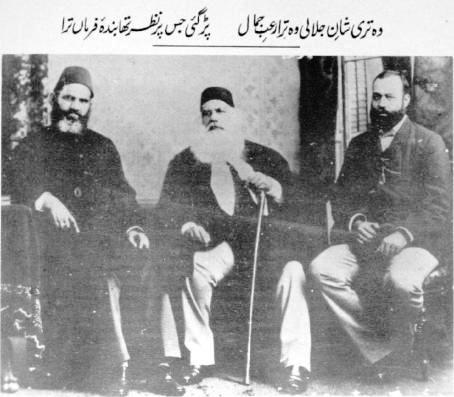
The European conquest of North Africa, Iraq and Syria in the 19th and 20th centuries created a long-term identity crisis in these countries but while resentment against European conquest and interference grew steadily in these regions, other trends were also visible. An ambivalence towards the rise of Europe is clearly visible in the sources. Appreciation for the West and the recognition of its historical superiority over the non-Western countries was one side of this ambivalence afflicting the native intellectual. Opposition to the West was another. It is true that several intellectuals and leaders in the Islamic world were impressed by this rise and many came back to their countries after visits to European cities full of admiration for the achievements of European modernity. For instance, the Iranian intellectuals Mulkum Khan (1833-1908) and Aqa Khan Kirmani (1853-96), both contemporaries of Syed Ahmad, urged their countrymen to acquire Western education and a modern legal code. Both intellectuals perceived that the separation of religion, civil society and state was the basis of European modernity in comparison with non-European countries. Egyptian writer Rifah al Tahtawi (1801-73), another contemporary of Syed Ahmad, was rather taken with Paris as a modern functioning, punctual city. Impressed with the high level of literacy in Paris, he urged his countrymen to imbibe the lessons of the European Enlightenment. It is a different matter that the lessons of European modernity, when they were applied in Turkey, Iran and Egypt, became harbingers of a Westoxicated violence against which popular Islam rebelled in the 20th century. The tendency of admiring European achievements was not restricted to the Muslim intellectuals who came into close contact with Europe in the 19th century. In India, as is well known, the early contemporary of Syed Ahmad, Raja Ram Mohan Roy of Bengal began a social reform movement under the impact of the British rule and Christianity. Traditional Indian intellectuals, most of whom considered British rule providential, began reform movements in all the presidencies and would continue throughout the 19th century in various forms. In this connection it would be unfair to single out Sir Syed as a loyalist par excellence in the 19th century.
Education was central to all these movements because their founders were impressed by the European Enlightenment, at the heart of which, they at least thought, was the combination of modern reason and science. While these reform movements aimed at producing a synthesis of the West (modern) and the East (tradition) suitable to peculiar Indian conditions, we should not fail to notice the extremes on both sides of these movements. So arose the outbursts of the freethinking Young Bengal Derozians who debunked Hindu traditions and spoke of a future free from idol worship and superstitions. On the other extreme were reactions to the West which harked back to a mythical golden age, Aryan or Islamic or even Sikh. Mahdis and Hajis rose to lead popular movements in many parts of South Asia. Several of these reactions were embodied in Wahabi puritanism, the Sikh Kuka Movement and revivalist movements like the Arya Samaj founded by Dayananda Saraswati in 1875 as an endeavour to create a text-based egalitarian Vedic-Hindu society of the Aryans. Of these reactions to European modernity, the Wahabi movement and Arya Samaj became influential in the long term and we find ourselves living with their social and religious consequences.
Once again we must pause and notice the importance of mass education in these movements; both are based on pedagogical indoctrination on a large and politically significant scale. Both the movements use modern methods, are critical of modernity and want their adherents to reject it in practice as far as possible. Both are patriarchal, masculine, doctrinaire and are known for their uneasy relationship with modernity. They want to achieve a utopian world with the use of modern technology.
In the 19th century, the modern Indian communities, as we recognize some of them now, were created by a process predicated upon the myriad interaction of a largely pre-modern people with the colonial state in India. It is a well-established fact that in this process the native reactions to colonial modernity were varied. At one level, colonialism opened up avenues for the non-elite in the urban centres it created in India; these avenues led to the Dalitbahujan and Dravidian movements in Maharashtra and South India. At another level, colonialism created a crisis of identity among the traditional intellectuals of all Indian communities who faced the prospect of extinction in a fast-changing world influenced by new socially rising groups. It was clear before the Mutiny of 1857 that the traditional elite could retain control over the communities they led by first retaining and expanding their own historical relevance. In pre-colonial India these elite had remained influential due to the class and caste basis of Indian political power. Europe was practically and philosophically irrelevant to this state of affairs. In fact, with the rare exception, Europe and European power did not figure prominently in the rumination of most Indians during the 18th century.
The Company was one among the several powers Indians dealt with till the British conquest of Bengal changed the historical equations in India forever. In the 19th century, with India conquered by the British, the traditional elites could no longer approach the world with an ostrich-like approach. They had no choice but to contend with European – and its corollary, colonial – modernity in India or risk the prospect of becoming historically irrelevant. How could a young Muslim traditional intellectual, a scion of a family whose history was enmeshed with the fortunes of the Mughal Empire, and who became an employee of the East India Company ignore this central question? But Syed Ahmad was not completely above the trends of his time; his relevance lay in his attempted social transcendence. From a scholar who would have wasted his time translating Mughal texts or dabbling in obscure astronomy Syed Ahmad turned to Muslim social reform based primarily on modern education. Further, the Indian defeat of 1857 and conclusions drawn from the revolt by the British, convinced Syed Ahmad that it would be futile and foolhardy for Indian Muslims to oppose the British.
The fact that some community leaders were trying their best to re-produce communities based on pristine and unassailable texts and myths of a pre-modern golden age was public knowledge in the 19th century. Printing presses and newspapers had proliferated in India by then and intellectuals like Syed Ahmad were well informed in general thanks to the growing print culture in colonial India. Swamis like Dayananda Saraswati and Islamist preachers like Sayad Ahmad of Rae Bareli were trying to answer the question “What went wrong?” in their own ways. Their answer lay in making people return to a mythical past unsullied by foreign elements. Hence the Arya Samaj was founded in 1875 to create a new Vedic-Hindu society by ridding Hindu society of Brahminism and the influence of Islam and Christianity. Similarly, the revivalist Wahabi movement was aimed at creating an ideal Islamic society in the northwest of India based on a strict interpretation of the Sharia. The ultimate aim of this movement, with support and funding in north India, was to create an ideal Islamic order and reconquer India for Islam. To one, Islam was a contaminant in Indian history, to another a panacea for India’s problems.
Both revivalist movements mentioned above were puritanical and utopian and both made attempts to reject Western influences. Both had long-term consequences that are not necessary to recount here. However, while we speak of the ideas that inspired these revivalist movements, it should not be forgotten that many core ideas of the revivalists were also present in the historical thought of the Indian reformers. For example, the notion of a culturally superior ancient Vedic Aryan civilization registered a strong presence in the historical imagination of almost all Indian social reformers beginning with Ram Mohan Roy. According to Roy, the age of the Upanishads was a golden age in Indian history and the medieval period a dark age. Similar ideas were present in the thought of other Bengali reformers like Vivekananda and Aurobindo – to whom the Aryan origin of India remained important. The trend was similar in Maharashtra where, from Ranade to Tilak, the superiority of the Aryan civilization over the Dravidian cultures of India appeared as a common thread in upper-caste imaginations of Indian history and culture.
In this context, those who accuse Sir Syed of having sown the seeds of Muslim separatism in India should note that Islam had already become demonized in a large body of influential Hindu reform thinking well before AMU was established. All this makes the context of Sir Syed’s intellectual evolution rather interesting for a scholar of evolving pedagogy in colonial India. The revolt of 1857 and the British attempt to portray it as a Muslim conspiracy against enlightened English rule queered the pitch for Muslim intellectuals like Syed Ahmad. This watershed event proved decisive to the career of this educationist and he concluded, correctly it seemed at the time, that the future of Indian Muslims lay in cooperating with, and not opposing, the British. He stayed away from the Mutiny like the elites in Calcutta and Bombay. In fact, while his family suffered terribly in Delhi, he helped the English in Bijnor during the Mutiny in every possible way and was rewarded handsomely afterwards[1].
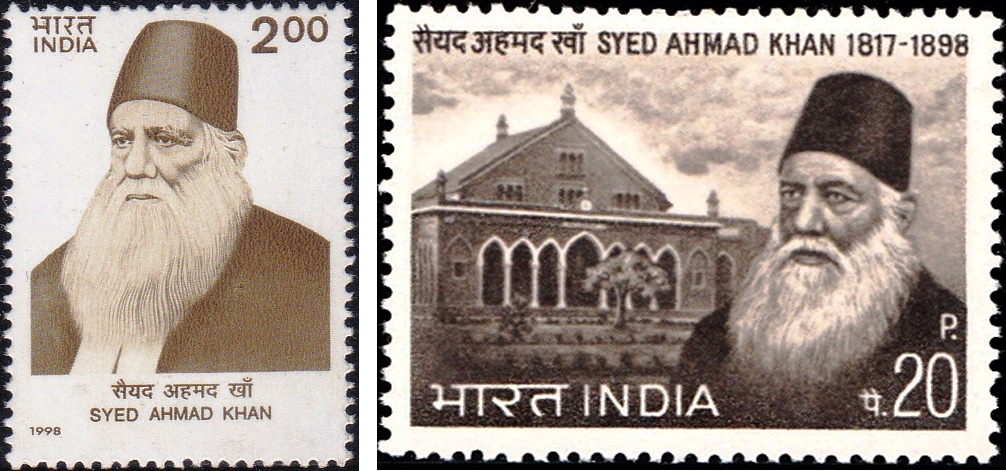
Those who note that Sir Syed was also an early critic of the Indian National Congress tend to overlook the fact that the Congress moderates, following the submissions of reformers like Roy in the early part of the 19th century, considered British rule in India providential. What Sir Syed feared most was the replacement of the British by the Bengalis who had taken an early lead in modern education compared with the Muslims of north India. As an intellectual who wanted to create a Cambridge for the Muslims in India, he was deeply attached to Persian learning and the Urdu language and was apprehensive of Hindu domination in the garb of the Indian National Congress’ criticism of the British rule in India.
In our view, and despite the problematic posed to the historian by Sir Syed’s personality and work, the Aligarh educational movement, which began with Sir Syed’s tour of England in 1869 – which exposed him to the state of education in Oxford and Cambridge – was in essence not an exception to the trend of social and educational reform meant for the gentry and the middle classes in colonial 19th-century India. Sir Syed’s futuristic vision was predicated upon a rational interpretation of Islam. Its thesis was formulated to prove that modernity, science, rational inquiry were compatible with a correct interpretation of Islamic philosophy and history. In fact, his aim was to translate Islam to the West and the West to the Muslims of India in the context of the widely prevalent Islamophobia in many Western societies of the time.
His realization that Indian Muslims had a lot to learn from modern education should not surprise us because rare was an educational experiment in colonial India that did not want to achieve a synthesis of modernity and tradition. In fact, writer-poet Mirza Ghalib had conveyed to him before the Mutiny of 1857 destroyed the old Mughal-centric world of Delhi, that Muslims or Indians had to learn much from the rise of the West. Even the staunch opponents of Western learning and industrial modernity could not evade Western education in the 19th century. Thus, the Arya Samaj educational initiatives ultimately resulted in the mushrooming of the DAV schools and colleges. The Vedic had to align with the Anglo despite the prescriptions written by the revivalist founder of the Arya Samaj. In the 19th century, the colonial and colonized subject in India, as elsewhere, found himself torn between tradition and modernity, between his own imagined history and the real colonial present in which he felt powerless against the colonial master. The colonial subject could either overcome the sense of powerlessness, alienation and anomie in a violent reaction against the colonizer or a futile search for a historical utopia. In the 19th century, failure stalked both these projects. The third approach of the colonized subject was to search for a synthesis of tradition and modernity; this would work for the elite within the colonized society who preferred gradual reform to an outright social revolution.
Given the fact that religion played an important role in the quotidian life and worldview of Indians, elite reformers like Sir Syed were left with no choice but to reinterpret religion in tune with the historical need of modern education. Impressed by the existence of chapels in all Oxford and Cambridge colleges he wanted mosques attached to the educational institutions in Aligarh. He wanted Islam to play the same role in Aligarh that he thought Christianity played in the emergence of modern educational institutions in Britain. The fact that religion did not really play an important role in modern education was not lost upon him. He also knew that religious sectarianism militated against the spirit of learning and detracted from a rational view of religion. His directions to the students of the Muhammadan Anglo-Oriental (MAO) College regarding their code of conduct leaves little doubt in this matter; he forbade them to indulge in sectarianism of any kind. We do not know, and I am not competent enough to say, what role the mosques have played in the promotion of modern education in AMU. However, what we know is that Sir Syed wanted the gates of ijtihad to remain open. In his view, the Indian Muslim had to be practical. The Indian Muslim had to become a living example of a dialogue between the rationality of Islam and the historicity of modernization or else be prepared to be consigned to the dustbin of history. Only by developing a synthesis of Islam and modernity, and trusting the innate goodness of the providential British rule in India, would the Indian Muslims usher themselves into a modern age. Sir Syed was not different from his contemporaries of other faiths in holding this view. It is a different matter that in a world of competitive community consciousness, which characterized colonial Indian society in the 19th and 20th centuries, a few communities were not supposed to look out for their interests without being labelled either casteist or separatist.
This article is based on the paper presented at the international conference ‘Commemorating Syed Ahmad Khan: A Historian, Intellectual and Man of Reason’, organized by the Centre for Advanced Study, Department of History, Aligarh Muslim University, Aligarh, from 29-31 January 2018.
[1] Sir Syyid Ahmad Khan’s History of Bijnor Rebellion, Translated with notes and Introduction by Hafeez Malik and Morris Dembo, Idarah-i Adabiyat-i Delli, Delhi, 1982, pp 142-43.
Forward Press also publishes books on Bahujan issues. Forward Press Books sheds light on the widespread problems as well as the finer aspects of Bahujan (Dalit, OBC, Adivasi, Nomadic, Pasmanda) society, culture, literature and politics. Contact us for a list of FP Books’ titles and to order. Mobile: +919968527911, Email: info@forwardmagazine.in)
The titles from Forward Press Books are also available on Kindle and these e-books cost less than their print versions. Browse and buy:
The Case for Bahujan Literature
Dalit Panthers: An Authoritative History
